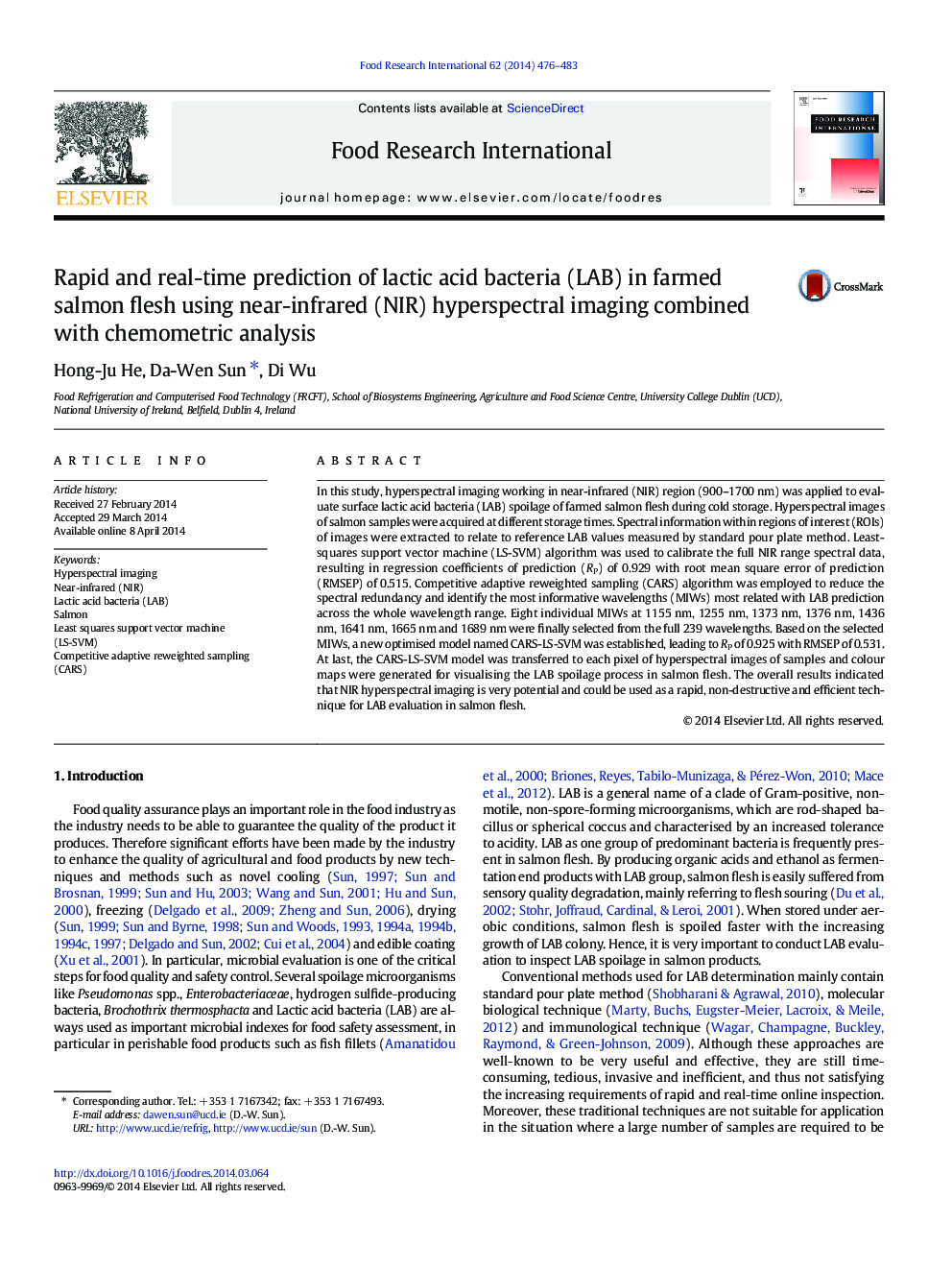| Article ID | Journal | Published Year | Pages | File Type |
|---|---|---|---|---|
| 6395862 | Food Research International | 2014 | 8 Pages |
Abstract
In this study, hyperspectral imaging working in near-infrared (NIR) region (900-1700Â nm) was applied to evaluate surface lactic acid bacteria (LAB) spoilage of farmed salmon flesh during cold storage. Hyperspectral images of salmon samples were acquired at different storage times. Spectral information within regions of interest (ROIs) of images were extracted to relate to reference LAB values measured by standard pour plate method. Least-squares support vector machine (LS-SVM) algorithm was used to calibrate the full NIR range spectral data, resulting in regression coefficients of prediction (RP) of 0.929 with root mean square error of prediction (RMSEP) of 0.515. Competitive adaptive reweighted sampling (CARS) algorithm was employed to reduce the spectral redundancy and identify the most informative wavelengths (MIWs) most related with LAB prediction across the whole wavelength range. Eight individual MIWs at 1155Â nm, 1255Â nm, 1373Â nm, 1376Â nm, 1436Â nm, 1641Â nm, 1665Â nm and 1689Â nm were finally selected from the full 239 wavelengths. Based on the selected MIWs, a new optimised model named CARS-LS-SVM was established, leading to RP of 0.925 with RMSEP of 0.531. At last, the CARS-LS-SVM model was transferred to each pixel of hyperspectral images of samples and colour maps were generated for visualising the LAB spoilage process in salmon flesh. The overall results indicated that NIR hyperspectral imaging is very potential and could be used as a rapid, non-destructive and efficient technique for LAB evaluation in salmon flesh.
Keywords
Related Topics
Life Sciences
Agricultural and Biological Sciences
Food Science
Authors
Hong-Ju He, Da-Wen Sun, Di Wu,
